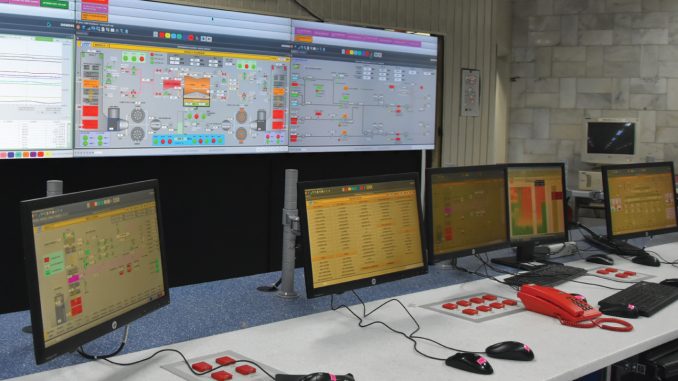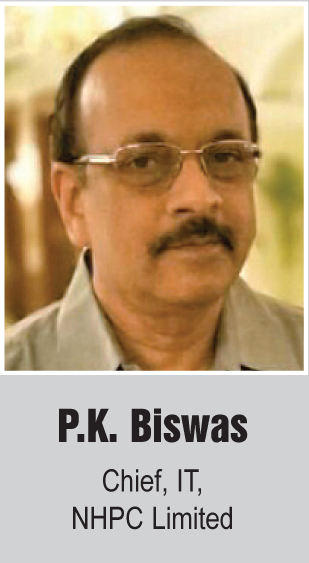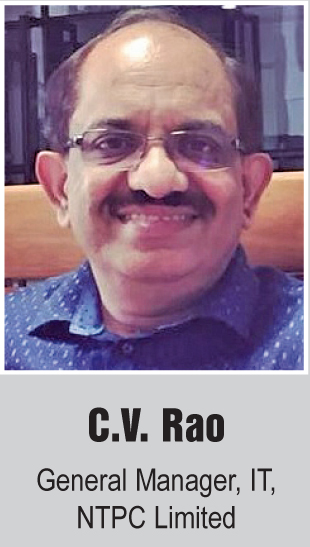
Providing access to affordable and reliable power has been a major task for gencos in a dynamic power market where there is significant competition, multiple buyers and threat from renewables. However, the adoption of various information technology (IT) and operational technology (OT) tools and platforms in the key areas of operations management, asset management and business process management are helping overcome some of these challenges. Technologies such as supervisory control and data acquisition (SCADA), enterprise resource planning (ERP) and cloud solutions help gencos in the real-time monitoring of data, integration of key business processes and maintaining a centralised inventory. Power Line presents the views of technology heads of leading power gencos on the recent IT and OT initiatives being implemented by them, the challenges faced and future plans…
What have been some of the IT and OT technologies implemented by your organisation in the past few years? How have these helped improve the company’s overall performance?
NHPC Limited is operating 20 hydropower stations across different states, having an installed capacity of 6,507 MW. Almost all its power stations are equipped with state-of-the-art distributed control system (DCS)/SCADA systems. Meanwhile, all the old power stations where SCADA systems were not deployed are in the process of modernisation.
Nitin Chandurkar
We have implemented the following IT and OT technologies in our organisation:
- Generation control room: A generation control room has been established to monitor various online
 real-time parameters of different generating stations for performance, diagnosis and optimisation. It consists of multiple applications such as MOD (merit order despatch) and ABT (availability-based tariff). We have also integrated the commissioned plants with the generation control room application for monitoring these parameters.
real-time parameters of different generating stations for performance, diagnosis and optimisation. It consists of multiple applications such as MOD (merit order despatch) and ABT (availability-based tariff). We have also integrated the commissioned plants with the generation control room application for monitoring these parameters. - Videoconferencing: We have implemented the videoconferencing solution in our organisation to monitor and review plant parameters. The videoconferencing units are installed across all company locations and the videoconferencing solution is used for conducting various meetings. It allows one-to-one and many-to-one connectivity and video conversation. This helps save travel time and cost as well as increases communication amongst the stakeholders, thereby increasing efficiency.
- HANA enterprise cloud: The company has been implementing SAP at all its locations. In fact, in terms of ERP implementation, it has set a benchmark for other utilities seeking SAP-ERP implementation. We successfully migrated to SAP-Hana enterprise cloud (data centre and disaster recovery) from the on-premises data centre, which was due for upgradation.
- Biometric attendance system: We opted for centralised implementation of a biometric attendance system across the company and linked the biometric system with SAP. The integration helps in monitoring in/out time, shift management, outpass management, and visitor management for all locations.
One of the key initiatives has been capturing emission data in real time directly from measuring devices at the power station using GSM-based aggregators, collating it with a cloud-based database and sharing it with the Central Pollution Control Board. This has helped in statutory compliance and close monitoring of emissions, as prescribed by the statutory authorities.
What are some of the business areas that are proposed to be covered through IT-OT integration? Which IT/OT technologies hold most relevance going forward?
P.K. Biswas
Our company has felt the need to create a centralised monitoring facility at NHPC’s corporate office at Faridabad for the display and analysis of power station parameters on a real-time basis. In order to protect the SCADA/DCS system from viruses and other malicious activities, firewall and intrusion prevention system (IPS) solutions with industrial signatures have been proposed to be connected between the DCS interface node and the OPC server/IEC gateway. Connectivity between the DCS interface node and MPLS (multi protocol label switching)/ Ku-Band link will also be established through firewall. NHPC envisages an appropriate fusion of its OT and IT infrastructure for improved business analytics.
The following benefits are expected from the proposed IT-OT integration at NHPC:
- Long-term and reliable storage of data, which helps in the central repository standard unidirectional real-time communication with power stations using SCADA/DCS/IEC to address cybersecurity concerns.
- Heterogeneous power station-specific and quality data accessible in a single environment.
- Increases the visibility of current and old parameters and measurement behaviour for facilitating business decisions.
- Improves the power plant availability factor and helps in troubleshooting.
- Facilitates real-time monitoring of NHPC’s hydro stations on a river basin basis.
Nitin Chandurkar
Our organisation plans to implement the following technologies:
- Fully integrated security surveillance system: This technology is designed to monitor the full perimeter of the power plant and its key assets/buildings to enable designated authorities to address situations/incidents of any nature using computer-based decision making. This project will provide 360-degree situational awareness to secure the plant.
- Thin client technology: This technology will enable better maintenance/ administration, enhance cybersecurity and ease software licensing.
C.V. Rao
We plan to undertake the monitoring and analysis of real-time parameters of solar and wind power stations from a central control room by capturing data from the process control system and routing it to a central cloud-based time-series database using the internet, thereby helping in the optimisation of asset performance and predictive maintenance. Going forward, internet of things would hold relevance.
What have been the major impediments to IT-OT integration in your organisation? How are these being addressed?
P.K. Biswas
The major impediments to IT-OT integration in our organisation have been:
- Prohibitive costs of setting up IT-OT infrastructure and subsequent renovation and modernisation.
- Resistance due to change management.
- Difficulty in establishing a cost-benefit analysis.
- Meeting timelines due to the remoteness of NHPC’s power stations.
Nitin Chandurkar
Our company has faced many challenges during IT-OT integration. These include:
- Lack of skilled technical staff.
- Technical training of staff with regard to latest technologies.
- Replacement of obsolete technology.
- Prolonged procurement processes.
C.V. Rao
We have faced concerns regarding the stability of process control systems when integrated with IT. There have been limitations pertaining to antivirus and operating system upgradation, as well as security of OT systems when connected to IT systems. Further, it has been challenging to have an appropriate design for integration architecture. The use of firewalls with proper configuration and security audits has also been difficult.


